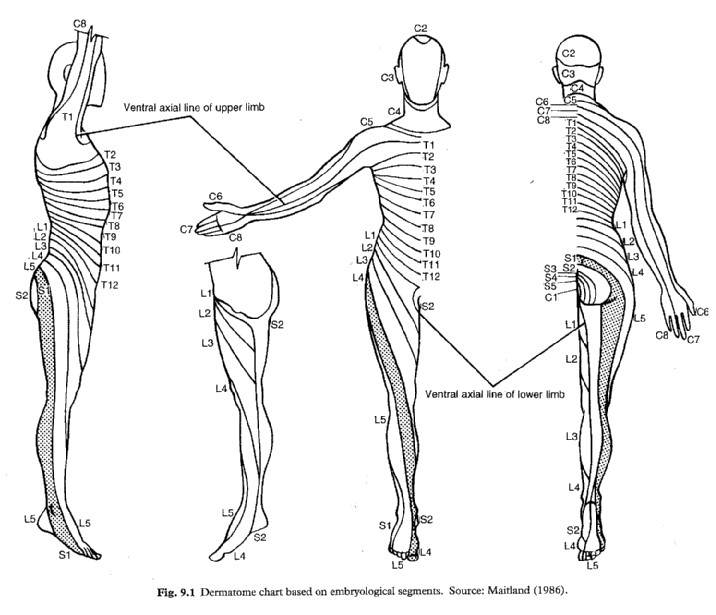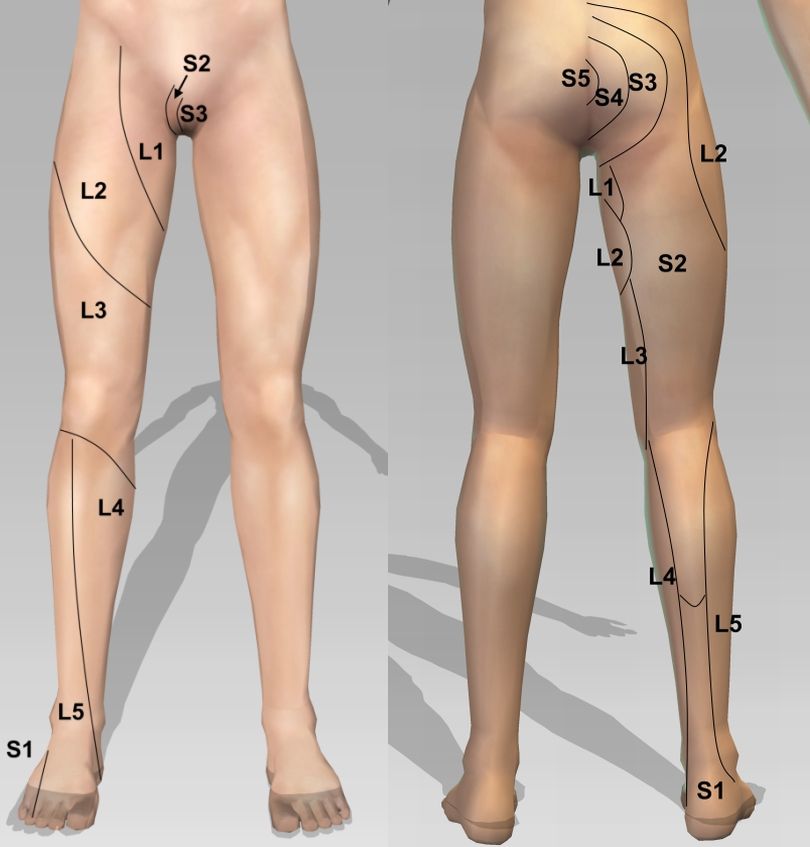Myotomes
| Oxford Grade | Descriptor |
|---|---|
| 0 | No signs of activity |
| 1 | Flicker of activity, no movement |
| 2 | Full active range of motion, across gravity |
| 3 | Full active range of motion, against gravity |
| 4 | Moderate resistance |
| 5 | Maximal resistance |
| Movement | Nerve Root Segments |
|---|---|
| Shoulder girdle elevation | C3/4 |
| Shoulder flexion / abduction | C5 |
| Elbow flexion | C5/6 |
| Elbow extension | C7/8 |
| Wrist flexion / extension | C6/7 |
| Finger flexion / extension | C7/8 |
| Finger abduction / adduction | T1 |
| Movement | Nerve Root Segments |
|---|---|
| Hip flexion | L2/3 |
| Hip extension | L4/5 |
| Hip adduction | L2/3 |
| Hip abduction | L4/5 |
| Knee extension | L3/4 |
| Knee flexion | L5/S1 |
| Ankle Dorsiflexion | L4/5 |
| Great toe extension | L5 |
| Ankle plantarflexion | S1/2 |
Dermatomes
Chart showing where you might expect radicular pain to radiate


Charts showing areas of skin where you would expect altered sensation following nerve root lesion
Upper Limb
Lower Limb


Reflexes
| Reflex | Nerve Segments |
|---|---|
| Biceps Jerk | C5/6 |
| Triceps Jerk | C7/8 |
| Brachioradialis Jerk | C6/7 |
| Reflex | Nerve Root Segments |
|---|---|
| Knee Jerk | L3/4 |
| Ankle Jerk | S1/S2 |
The Babinski test (“plantars”) can be abnormal in the present of upper motor neuron damage. A normal response is flexion of the toes. An abnormal response involves dorsiflexion of the great toe and fanning of the other toes
